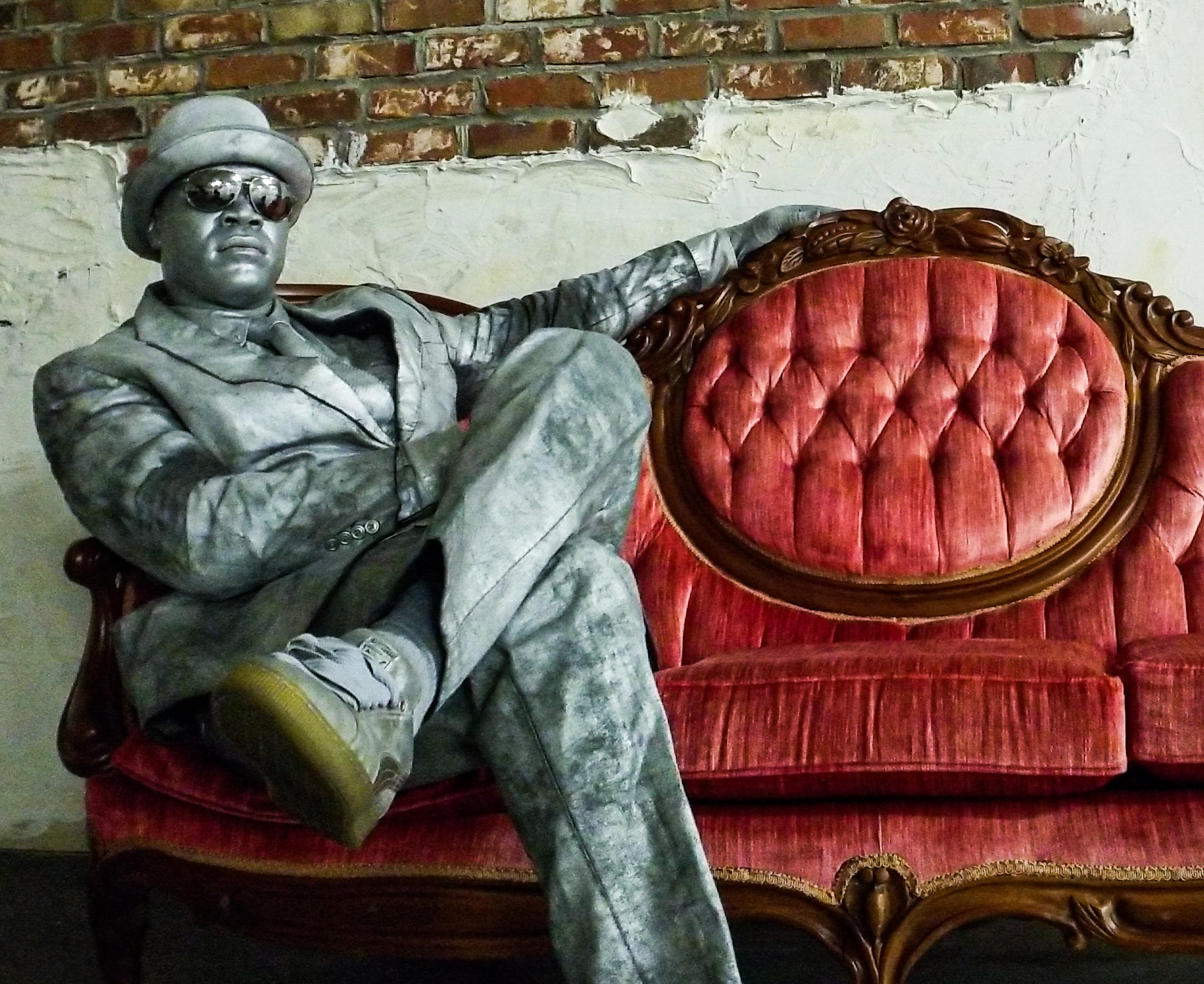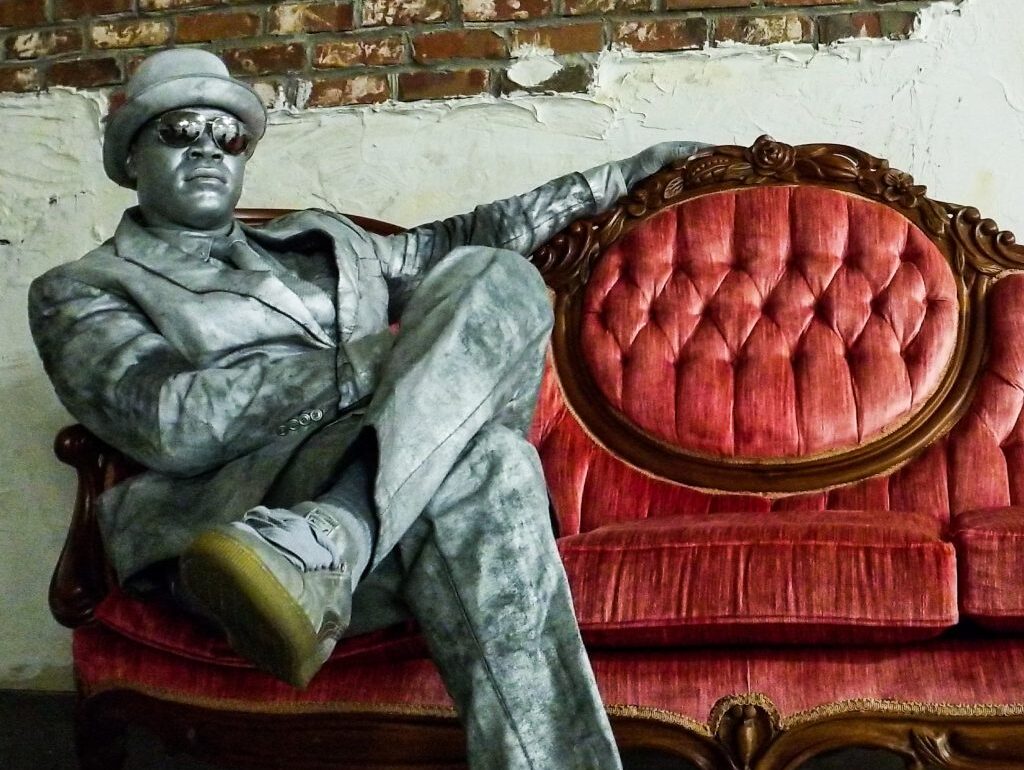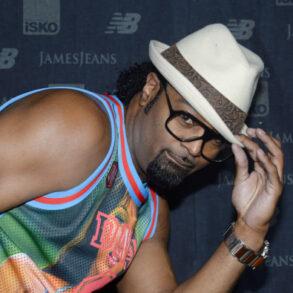
Photograph courtesy Julius Jenkins
As the founder of street dance crew Millenium Robots, B-boy Julius “Eclypse” Jenkins’s mechanized style of popping is his signature hip-hop dance technique. For 25 years, Jenkins has upheld the artform as a battle competitor, performer, and instructor. His nonprofit, Heroes Rise Street Dance Academy, seeks to preserve the authentic movement, culture, and histories associated with Black American vernacular dance.
Who were your early inspirations in street dance?
We would see the people who were most accessible as far as media presence. From Breakin’, Shabba Doo and Boogaloo Shrimp, a.k.a., Ozone and Turbo, those are probably the first people I’d seen doing street dance. And then later seeing Mr. Wiggles—Steffan Clemente—he was my gateway into what high level street dancing could look like. Mr. Wiggles was known for having made tutorial videos for popping. My first breaking inspirations were a guy named Iron Monkey, Remind, the whole Style Elements Crew, Rhythm Bugz’ crew, [and] the old Rock Steady Crew.
What inspired you to do robotic animation style dancing?
After I transitioned to popping, I got deeper into it and I was doing the most popular style, Electric Boogaloo. About 2005, I met a dude named Tempo, this crazy dope popper, and I didn’t know who he was, but they said he was on Star Search, and he trained with the best in L.A.
His popping wasn’t the style of popping that we’d all been taught; it was completely different…. More solid, clean, hard-hitting lines. I talked to him, and he started training me and teaching me some of his things that he was doing. I realized I liked the harder, more mechanical feel. And then I started doing more research on it and started finding people who were doing animation, the style of bopping. I started to watch people like Bopping Andre, Mr. Animation, LA Poppers, people who weren’t just doing the Electric Boogaloo style of popping, but had a harder, more robotic look to their pop. I started watching them and that is where I started to lean more into the robotic feel.
Are there some dance styles that originated in Cincinnati?
Not necessarily a dance style, but we have The Down the Way; that’s really the main thing that I guess Cincinnati can claim. But there’s always been strong representation for street dance here in Cincinnati. Like if you talk to [crews] Murder Rock or Cold Crush, they’ll tell you stories about how they were dancing so good here that crews from New York were calling them up talking about, ‘We’re coming down there to battle y’all.’
Are you familiar with Shane Sparks? He grew up here and was a B-boy who became a choreographer.
Yep. He was one of the few that did come back often to represent; our first competition in Cincinnati, he was one of the judges. He was super cool, humble, always supportive. He was part of the group Cold Crush, and then Murder Rock, but even before them, was The Skywalkers. There’s just so much dance history. People talk about the emcee part and the music part and don’t really get into the dance aspect—half of these people here were on tour with like everybody.
What are some ways that hip-hop dance has evolved in Cincinnati over the decades?
I think street dance has become more understood in a way, we still have a long way to go, but just the term street dance, people understanding that there is a difference between saying hip-hop and street dance. They understand hip-hop is a street dance, it’s not the umbrella term.
I’m grateful for being able to teach at the university level, going in and teaching the dancers at UC, at NKU or Xavier or Miami, giving them the information so that they go out into the world and start talking about what they’re learning in class, they know what street dance is, what is authentic hip-hop, versus whatever it is that they’re teaching at school or in their studios.
What are some things that haven’t been done yet?
One of my goals is to try to create an ecosystem in Cincinnati that can support freestyle-based dancers who choose to either focus on American street style dance, or on nontraditional or freestyle dance movement to create a career path that they can get into and legitimately make a living at just dancing but not have to join a company.
Breaking was just in the Olympics, and everybody was interested in talking about it, but not enough people were interested in funding anything that would help support the art form to find space or give support financially through funding to allow us to do that. I think once we have a locked in hub that people know, I think that there’ll be an explosion of the artform in Cincinnati the way we’ve probably never seen it.
This post was originally published on this site be sure to check out more of their content.





